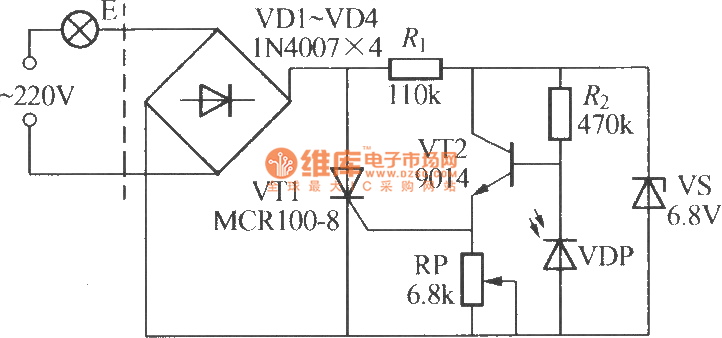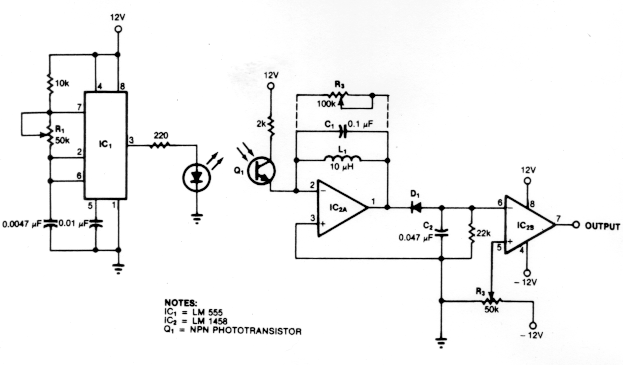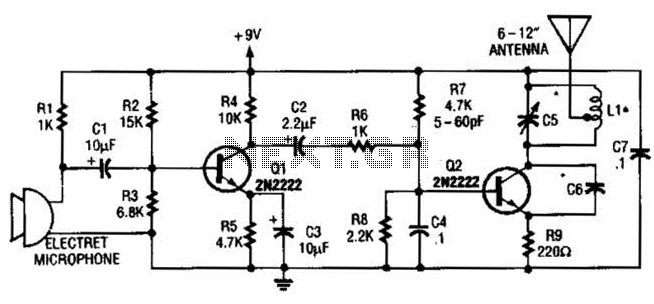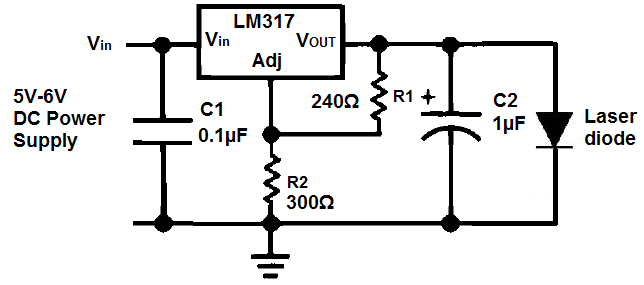
Double limit temperature alarm circuit
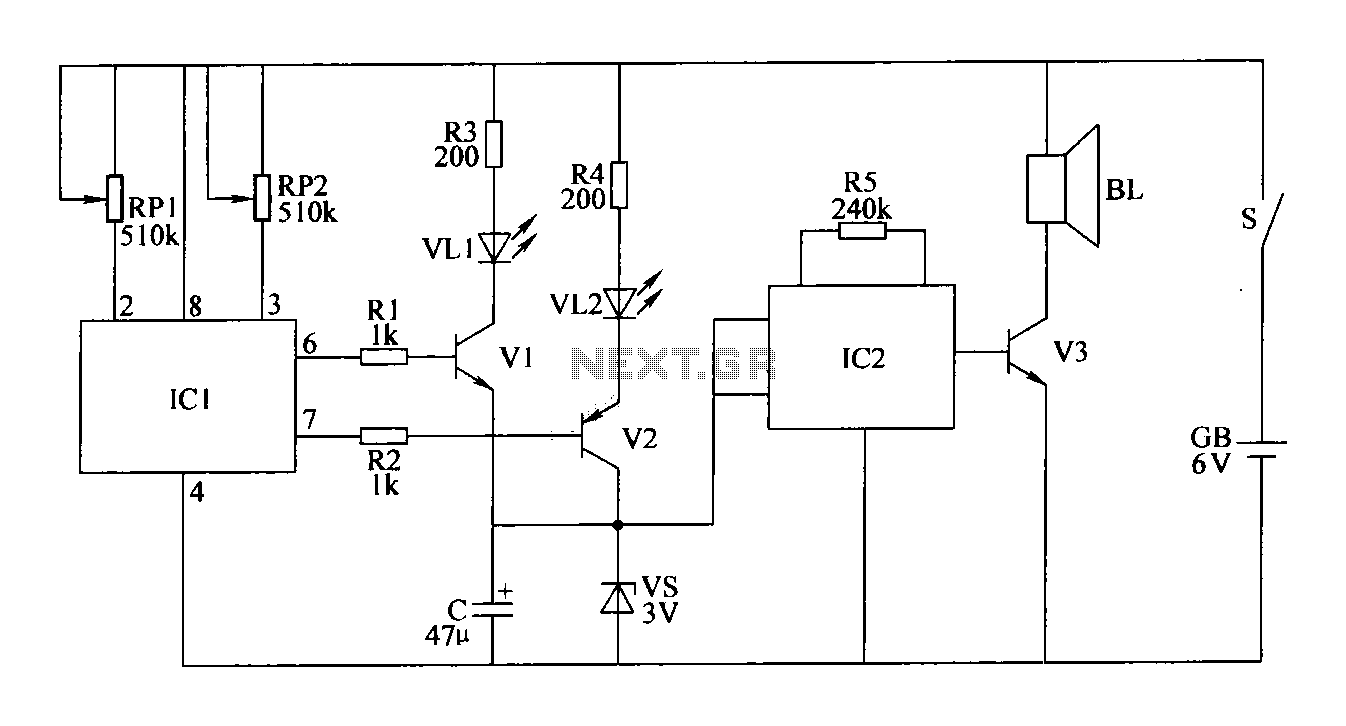
The double-limit temperature alarm circuit consists of a temperature detection control circuit, a temperature indicating circuit, and an alarm sound circuit. The components selected include resistors R1 to R5, which should be 1/4W metal film or carbon film resistors. Potentiometers RP1 and RP2 are small organic solid types. The capacitors chosen are 10V aluminum electrolytic capacitors. Light-emitting diodes VL1 and VL2 are 3mm high-brightness types, with VL1 being red and VL2 being green. The silicon diodes selected for VS are rated at 1/2W and 3V. For the transistors, S9013 or C8050 silicon NPN transistors are used for V1 and V3, while S9015 or C8550 silicon PNP transistors are used for V2. The temperature sensor IC1 is a TC602, and the audio integrated circuit IC2 is of the KD9561 type. The speaker BL is a 0.25W, 8-ohm micro speaker, and the switch S is a small pole toggle switch. The power source GB is a 6V laminated battery.
The double-limit temperature alarm circuit is designed to monitor temperature levels and provide visual and auditory alerts when predefined thresholds are exceeded. The circuit operates by utilizing a TC602 temperature sensor (IC1) that detects ambient temperature and outputs a corresponding voltage signal. This signal is processed through a control circuit that compares the voltage against two set limits, defined by adjustable potentiometers RP1 and RP2.
The resistors R1 to R5 form a voltage divider and help set the reference levels for the comparator within the control circuit. The use of 1/4W metal film or carbon film resistors ensures stability and precision in the circuit's performance. The aluminum electrolytic capacitors serve to filter out noise from the power supply, ensuring stable operation of the circuit.
The visual indicators, VL1 and VL2, are high-brightness LEDs that provide clear visual feedback about the circuit's status. The red LED (VL1) indicates that the temperature has exceeded the upper limit, while the green LED (VL2) indicates that the temperature is within the acceptable range.
The alarm sound circuit employs the KD9561 audio integrated circuit (IC2) to generate sound when the temperature exceeds the set limits. The output is connected to a micro speaker (BL) rated at 0.25W and 8 ohms, which produces an audible alarm to alert users of the temperature condition.
Silicon diodes VS are used for rectification and protection within the circuit, ensuring that the components are not subjected to reverse polarity or voltage spikes. The choice of NPN and PNP transistors (V1, V2, V3) allows for effective switching and amplification of signals within the circuit.
The small pole toggle switch (S) is utilized to enable or disable the circuit, providing user control over the alarm system. The entire circuit is powered by a 6V laminated battery (GB), which offers a reliable power source for portable applications.
Overall, this double-limit temperature alarm circuit is a robust solution for temperature monitoring, combining visual and auditory alerts to ensure timely responses to temperature variations.The double-limit temperature alarm circuit by the temperature detection control circuit, the temperature indicating circuit and sound the alarm circuit, as shown in FIG. Components Selection R1 ~ R5 use 1 / 4W metal film resistor or a carbon film resistors. RP1 and RP2 are made of small organic solid potentiometer. C selected voltage is 10V aluminum electrolytic capacitors. VL1 and VL2 select 3mm high-brightness light-emitting diodes, VL1 red, VL2 is green. VS selection 1 / 2W, 3V voltage silicon diodes. V1 and V3 selects S9013 or Model C8050 silicon NPN transistor for use; V2 selects S9015 or Model C8550 silicon PNP transistors. IC1 selects TC602 temperature sensor IC; IC2 selected KD9561 type of audio integrated circuits. BL selection 0.25W, 8 micro-electric speakers. S selection of small pole toggle switch. GB selects 6V laminated battery.
The double-limit temperature alarm circuit is designed to monitor temperature levels and provide visual and auditory alerts when predefined thresholds are exceeded. The circuit operates by utilizing a TC602 temperature sensor (IC1) that detects ambient temperature and outputs a corresponding voltage signal. This signal is processed through a control circuit that compares the voltage against two set limits, defined by adjustable potentiometers RP1 and RP2.
The resistors R1 to R5 form a voltage divider and help set the reference levels for the comparator within the control circuit. The use of 1/4W metal film or carbon film resistors ensures stability and precision in the circuit's performance. The aluminum electrolytic capacitors serve to filter out noise from the power supply, ensuring stable operation of the circuit.
The visual indicators, VL1 and VL2, are high-brightness LEDs that provide clear visual feedback about the circuit's status. The red LED (VL1) indicates that the temperature has exceeded the upper limit, while the green LED (VL2) indicates that the temperature is within the acceptable range.
The alarm sound circuit employs the KD9561 audio integrated circuit (IC2) to generate sound when the temperature exceeds the set limits. The output is connected to a micro speaker (BL) rated at 0.25W and 8 ohms, which produces an audible alarm to alert users of the temperature condition.
Silicon diodes VS are used for rectification and protection within the circuit, ensuring that the components are not subjected to reverse polarity or voltage spikes. The choice of NPN and PNP transistors (V1, V2, V3) allows for effective switching and amplification of signals within the circuit.
The small pole toggle switch (S) is utilized to enable or disable the circuit, providing user control over the alarm system. The entire circuit is powered by a 6V laminated battery (GB), which offers a reliable power source for portable applications.
Overall, this double-limit temperature alarm circuit is a robust solution for temperature monitoring, combining visual and auditory alerts to ensure timely responses to temperature variations.The double-limit temperature alarm circuit by the temperature detection control circuit, the temperature indicating circuit and sound the alarm circuit, as shown in FIG. Components Selection R1 ~ R5 use 1 / 4W metal film resistor or a carbon film resistors. RP1 and RP2 are made of small organic solid potentiometer. C selected voltage is 10V aluminum electrolytic capacitors. VL1 and VL2 select 3mm high-brightness light-emitting diodes, VL1 red, VL2 is green. VS selection 1 / 2W, 3V voltage silicon diodes. V1 and V3 selects S9013 or Model C8050 silicon NPN transistor for use; V2 selects S9015 or Model C8550 silicon PNP transistors. IC1 selects TC602 temperature sensor IC; IC2 selected KD9561 type of audio integrated circuits. BL selection 0.25W, 8 micro-electric speakers. S selection of small pole toggle switch. GB selects 6V laminated battery.
